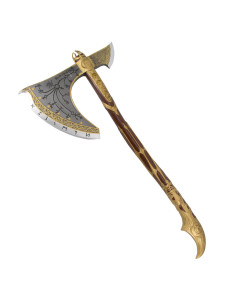

In the era of Norse warriors, the Viking ax stood as an iconic weapon , but what was the reason behind its choice on the battlefield? We will thoroughly explore the origin, technique and tactical implications that made the Viking ax an indispensable tool for these fearsome warriors.
The Viking axe, rooted in the culture of the Nordic peoples of Europe, stood out as a fundamental weapon for the Vikings and Saxons in their war raids. Its unique design, with a convex edge and lightweight construction, made it a lethal instrument for both attack and defense.
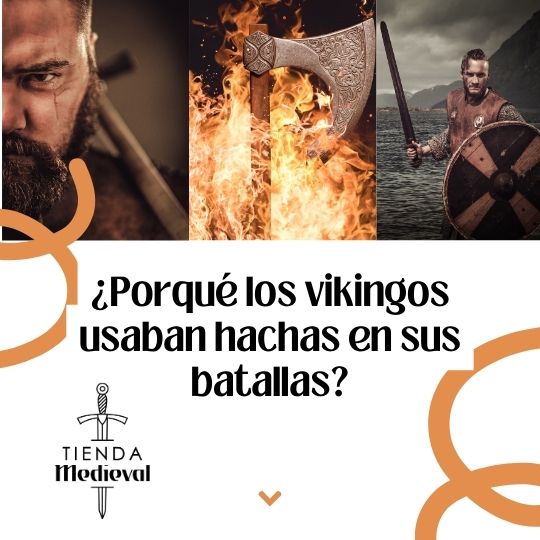
In the heat of battle, the Vikings deployed a series of ingenious tactics that took full advantage of the characteristics of the Viking axe. These strategies not only focus on the direct use of the weapon in hand-to-hand combat, but also encompass tactics of psychological intimidation and tactical coordination between war units. The Vikings, known for their cunning and skill on the battlefield, used the Viking ax not only as an instrument to inflict physical damage, but also as a tool to sow chaos and confusion within the enemy ranks.
Furthermore, its versatility would allow warriors to quickly adapt to different combat situations, from individual confrontations to assaults on enemy fortifications. The combination of the physical prowess of the Viking fighters and the efficient design of the Viking ax resulted in a lethal weapon that left a deep impression on its adversaries and contributed significantly to the Vikings' reputation for ferocity on the battlefields of the time. .
The Viking axe, deeply rooted in the culture of the Nordic peoples of Europe, was not only a tool of war, but a symbol of identity and power for the Vikings and Saxons in their war raids. Its unique and distinctive design, characterized by a convex blade and a lightweight but robust construction, not only made it lethal on the battlefield, but also made it an object of admiration and respect among Norse warriors.
From its forging to its use in combat, the Viking ax was imbued with deep cultural meaning. Each blade was carefully crafted by skilled artisans, using techniques passed down from generation to generation. This process not only guaranteed the quality and durability of the weapon, but also gave it a sacred and mystical character .
In addition to its distinctive design, the Viking axe's versatility made it indispensable in a variety of combat situations. Its sharp edge allowed for precise and deep cuts, capable of piercing armor and disarming opponents with ease. But beyond its offensive use, the ax also excelled in defensive tasks, allowing warriors to deftly block and deflect enemy attacks.
The importance of the Viking ax was not limited only to the battlefield; It also played a crucial role in the daily lives of the Vikings. It was a multifunctional tool used for household tasks , such as chopping firewood, building homes, and making boats. This versatility contributed to his status as a central element in Viking society, where his presence extended far beyond the battlefields and he became a symbol of Norse life and culture.
The lightness and efficient edge of the Viking ax not only made it the preferred choice of these warriors, but also designated as a symbol of power and skill on the Norse battlefields. Its carefully crafted design allowed the Vikings to wield the ax with surprising agility, giving them a crucial tactical advantage during confrontations. The combination of their balanced weight and sharp edge allowed them to make deep, precise cuts, capable of piercing armor and wreaking havoc on enemy lines.
Furthermore, the versatility of the Viking ax was unsurpassed. Not only did it serve as a melee weapon, but it could also be thrown with precision, making it a deadly project in the hands of a skilled warrior. This ability to adapt to different combat situations made it an invaluable tool in the strategy of the Vikings, who took full advantage of its potential both in quick assaults and in prolonged pitched battles.
The Viking ax was not only a tool of destruction, but also a symbol of status and honor for those who carried it. The most skilled and brave warriors sported elaborately decorated axes, reflecting their skill in combat and their prominent position within Viking society. This connection between weapon and warrior not only strengthened the combatant's emotional bond with his axe, but also inspired respect and fear in his adversaries.
The influence of the Viking ax is not limited to the past; His legacy resonates in the modern world, influencing everything from entertainment to business strategy.
The unique design of the Viking ax has inspired the creation of modern products, from gardening tools to sporting goods. The strength and effectiveness of its convex edge continue to be a source of inspiration for designers and manufacturers today.
The entrepreneurial mindset and determination of the Vikings on the battlefield offer valuable lessons for modern business leaders. Adaptability, resilience and the ability to take advantage of available resources are fundamental principles that can be applied in the contemporary business world.
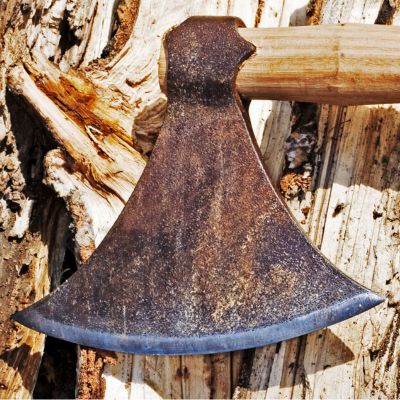
As we move forward in a digitalized world, the legacy of the Viking ax reminds us of the importance of staying connected to our roots and traditions. It inspires us to embrace change with courage and face challenges with determination and cunning.
This teaching urges us to adapt to new circumstances with flexibility and to preserve our cultural traditions as a fundamental part of our identity. In short, the Viking ax reminds us that, although the world evolves, our cultural roots are an anchor that guides us into the future.
Using the bottom point of the ax to capture the opponent's shields, limbs, and necks proves to be an effective tactic in immobilizing the enemy and facilitating their elimination. This strategy not only highlights the physical prowess and combat skill of the Viking warriors, but also their tactical cunning on the battlefield.
By taking advantage of the unique design of the Viking axe, Norse warriors developed ingenious tactics that allowed them to gain the advantage over their opponents, demonstrating their ability to adapt quickly in combat situations. This tactical skill was one of the keys to their success in war, allowing them to prevail even against forces superior in numbers or weaponry.
More than a simple instrument of war, the Viking ax represented a symbol of status and honor among the Norse peoples. Its size and quality not only reflect the wearer's prowess in battle, but also his social position and wealth. In Viking society, a warrior's worth was measured by the quality and design of his weapon.
Ornate and elaborately decorated axes were symbols of power and distinction. Additionally, many of these axes had sentimental value, passing from generation to generation as objects of heirloom and connection to family history and tradition.
In this way, the Viking ax transcended its function as a weapon to become an emblem of cultural identity and social prestige.
Although the Viking Age has come to an end, the legacy of the Viking ax lives on in history and popular culture. Its image as the characteristic weapon of these warriors continues to resonate in the collective imagination, reminding us of its fearsome reputation on the battlefields of the Middle Ages.
Beyond its role in warfare, the Viking ax has left an indelible mark on multiple aspects of contemporary society. From art and literature to film and video games, the figure of the Viking warrior with his ax has been recurring, serving as inspiration for epic narratives and striking visual representations.
Furthermore, the symbolism of the Viking ax has transcended the boundaries of history, becoming an emblem of strength, bravery and determination for those seeking to face challenges and overcome adversity in modern life. In the fields of sports and entertainment, the Viking ax has also found its place, being used as a symbol of identity and competitive spirit in various disciplines and events.


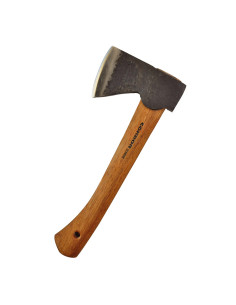

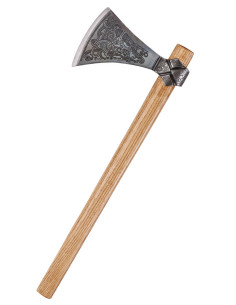



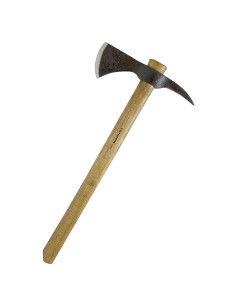

WhatsApp (+34) 690 26 82 33
